Wood fences remain one of the most traditional and favored fencing options, offering warmth, versatility, and a natural aesthetic. Made commonly from pine, cedar, redwood, and various hardwoods, wood fences can be tailored to a wide range of styles—from classic picket to solid board-on-board privacy designs. While they require regular maintenance such as staining or sealing to prevent rot, insect damage, and fading, their relatively low material cost and ability to be customized in height, spacing, and finish keep them popular among homeowners seeking a timeless look and functional boundary solution.
1. Wood Fences
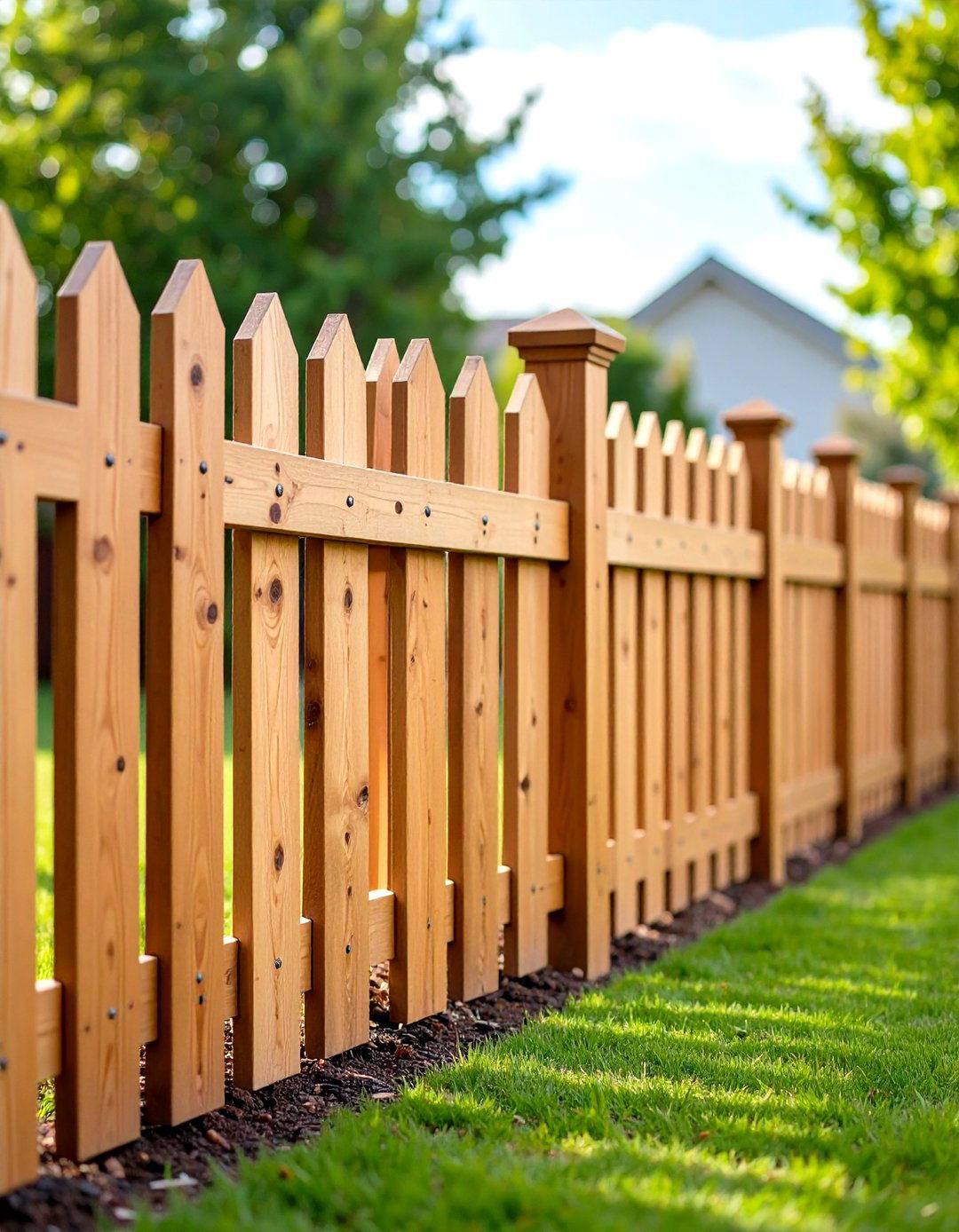
Wood fences provide a timeless, natural look, often constructed from pine, cedar, redwood, or hardwoods. Their versatility allows for styles ranging from low picket fences to tall, solid privacy barriers. Installation costs vary by wood type and design complexity, but material costs typically range from $5 to $25 per linear foot. Despite their beauty, wood fences demand consistent maintenance—such as yearly staining or sealing—to combat weathering, rot, and insect damage. Homeowners appreciate wood’s customizability, enabling unique heights, post spacings, and decorative cutouts. Properly maintained wood fences can last 15–20 years, blending function with rustic charm.
2. Vinyl Fences
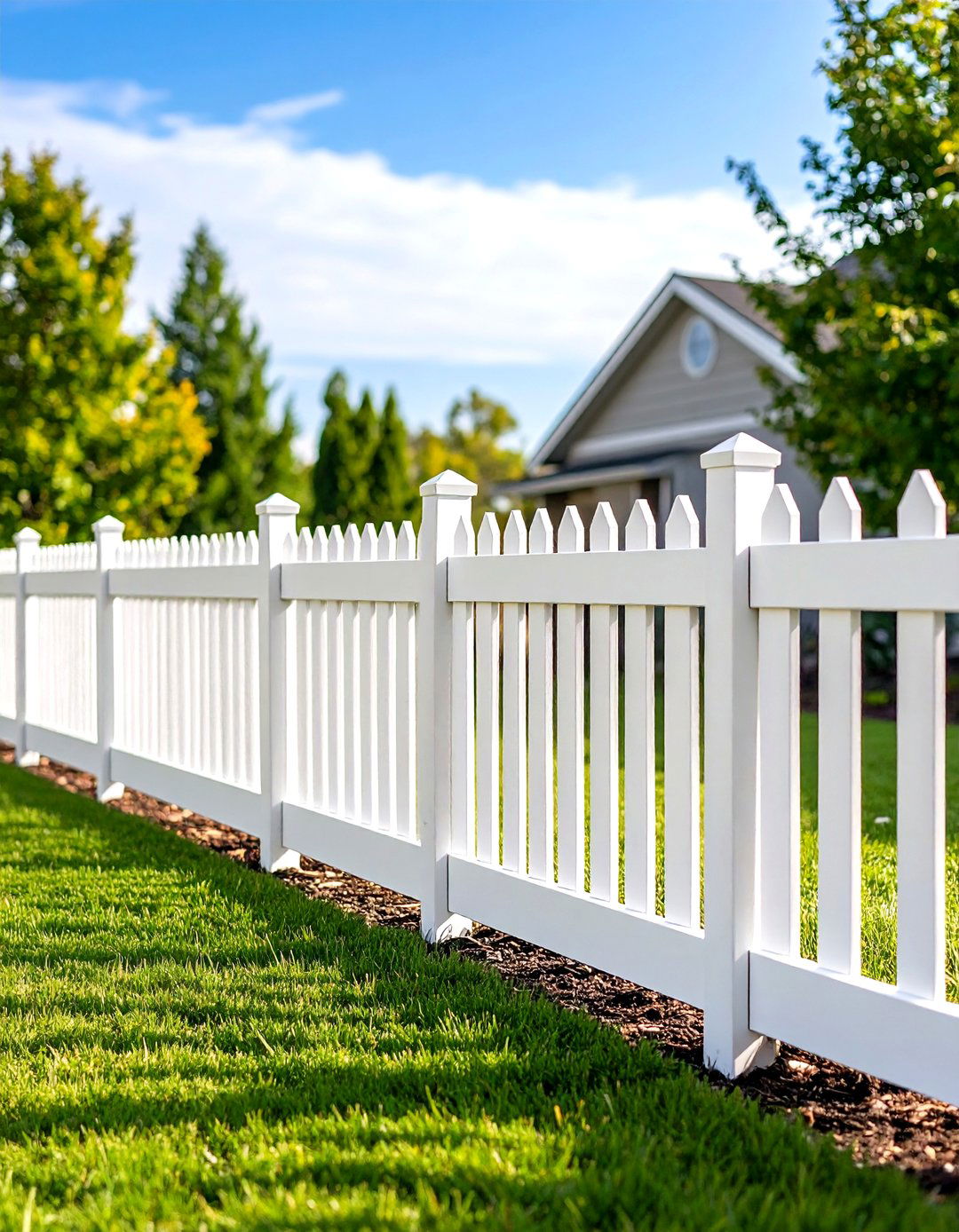
Vinyl fences, crafted from PVC, offer a low-maintenance alternative to wood, resisting rot, warping, and insect damage. Available in multiple colors and styles—from privacy panels to decorative picket designs—they typically cost between $20 and $40 per linear foot. Vinyl requires minimal upkeep; an occasional wash keeps it looking new, and there’s no need for painting or staining. Although upfront costs can exceed those of wood, vinyl fences can last over 30 years with little degradation. Their uniform appearance and durability make them popular for families and pet owners seeking a long-term, maintenance-free fencing solution.
3. Chain Link Fences

Chain link fences consist of galvanized or vinyl-coated steel mesh stretched between metal posts, offering a cost-effective and durable solution. Typical prices range from $8 to $18 per linear foot. They require little maintenance beyond occasional rust prevention and tightening of loose fittings. While they provide minimal privacy, chain link fences excel in security applications and containment, making them ideal for playgrounds, sports fields, and commercial properties. Privacy slats or climbing plants can enhance screening. Their open design allows visibility and airflow, and their longevity often exceeds 20 years in moderate climates with proper care.
4. Wrought Iron Fences
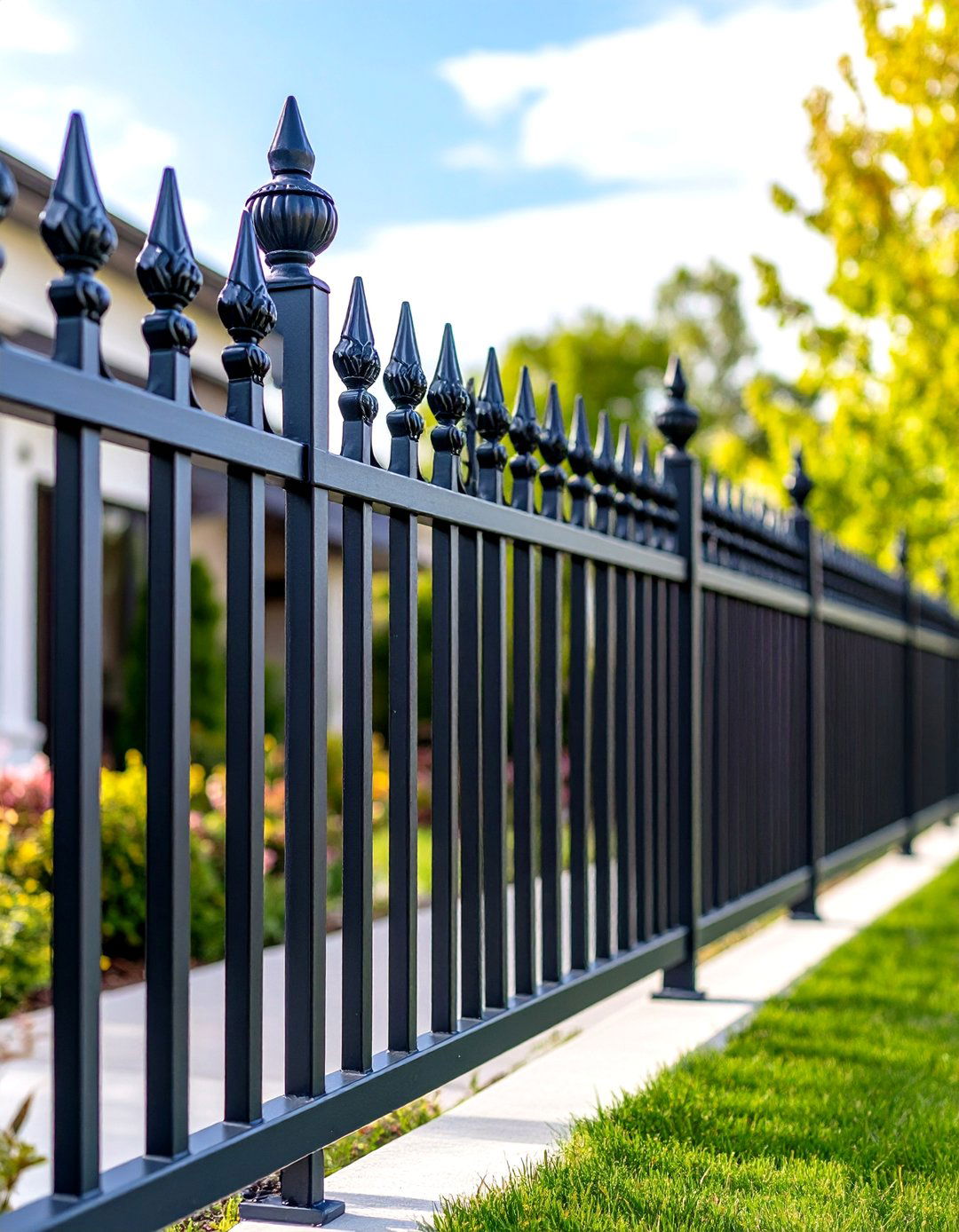
Wrought iron fences exude elegance and strength, fabricated from forged steel bars and ornamental elements like scrolls and finials. Installation costs generally fall between $25 and $50 per linear foot, reflecting material and labor intensity. These fences offer exceptional durability and security, resisting impact and weathering when properly painted and maintained. However, they require periodic painting or rust-inhibitor applications to prevent corrosion. Wrought iron’s open framework provides visibility while defining property lines. Its classic appearance suits historic and upscale homes, commercial sites, and estates, balancing ornate aesthetics with formidable resilience.
5. Composite Fences
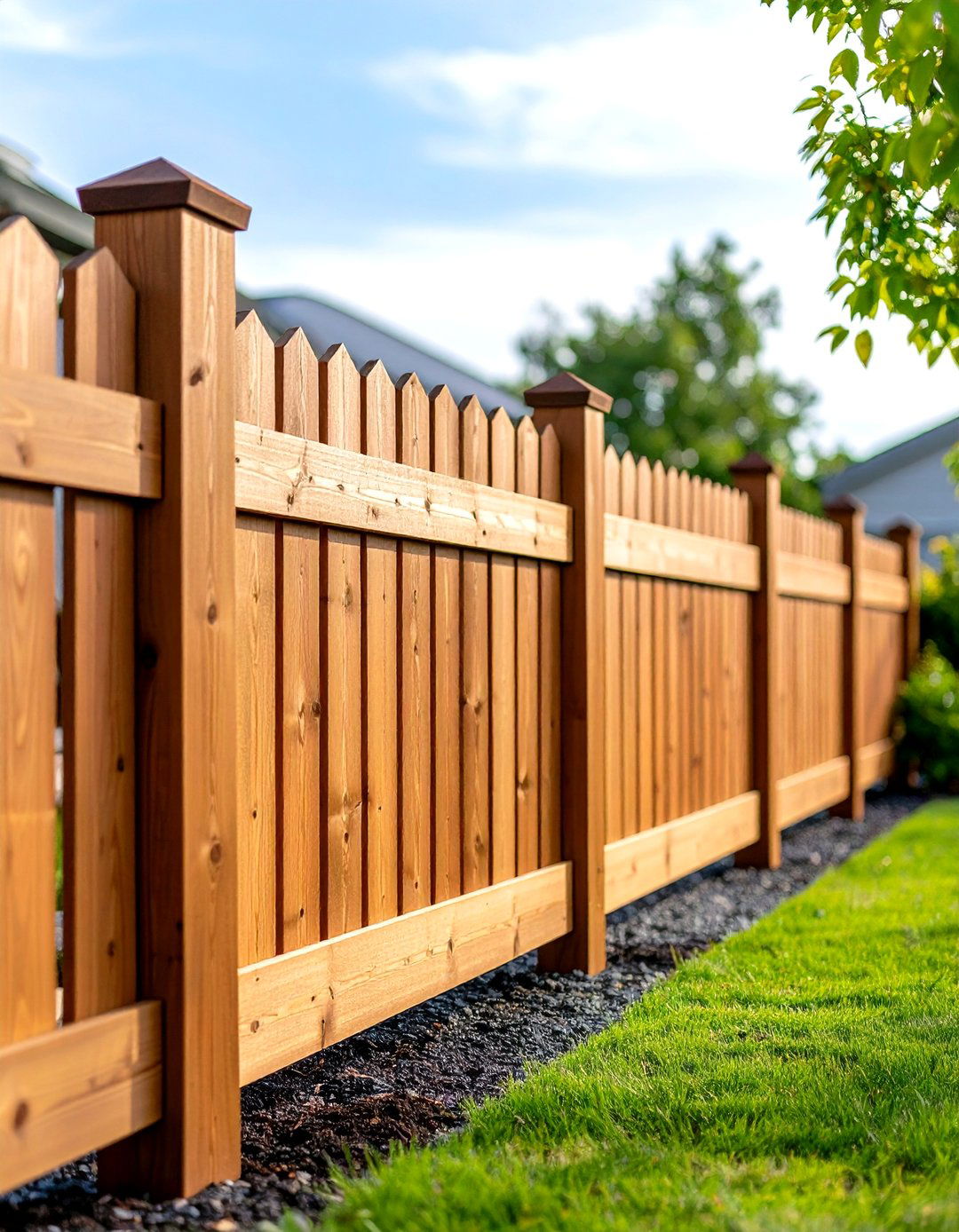
Composite fences combine recycled wood fibers and plastic polymers into durable, low-maintenance panels. Resembling wood grain, they resist rot, warping, and insect damage and often come with protective UV coatings. Installation costs range from $20 to $45 per linear foot, depending on board thickness and style. Composite panels require minimal upkeep—no staining, sealing, or painting—and maintain color and structural integrity for decades. They offer privacy without the environmental concerns of pure plastic, as many manufacturers use high percentages of recycled materials. Homeowners choose composite fencing for its blend of aesthetics, sustainability, and longevity.
6. Aluminum Fences
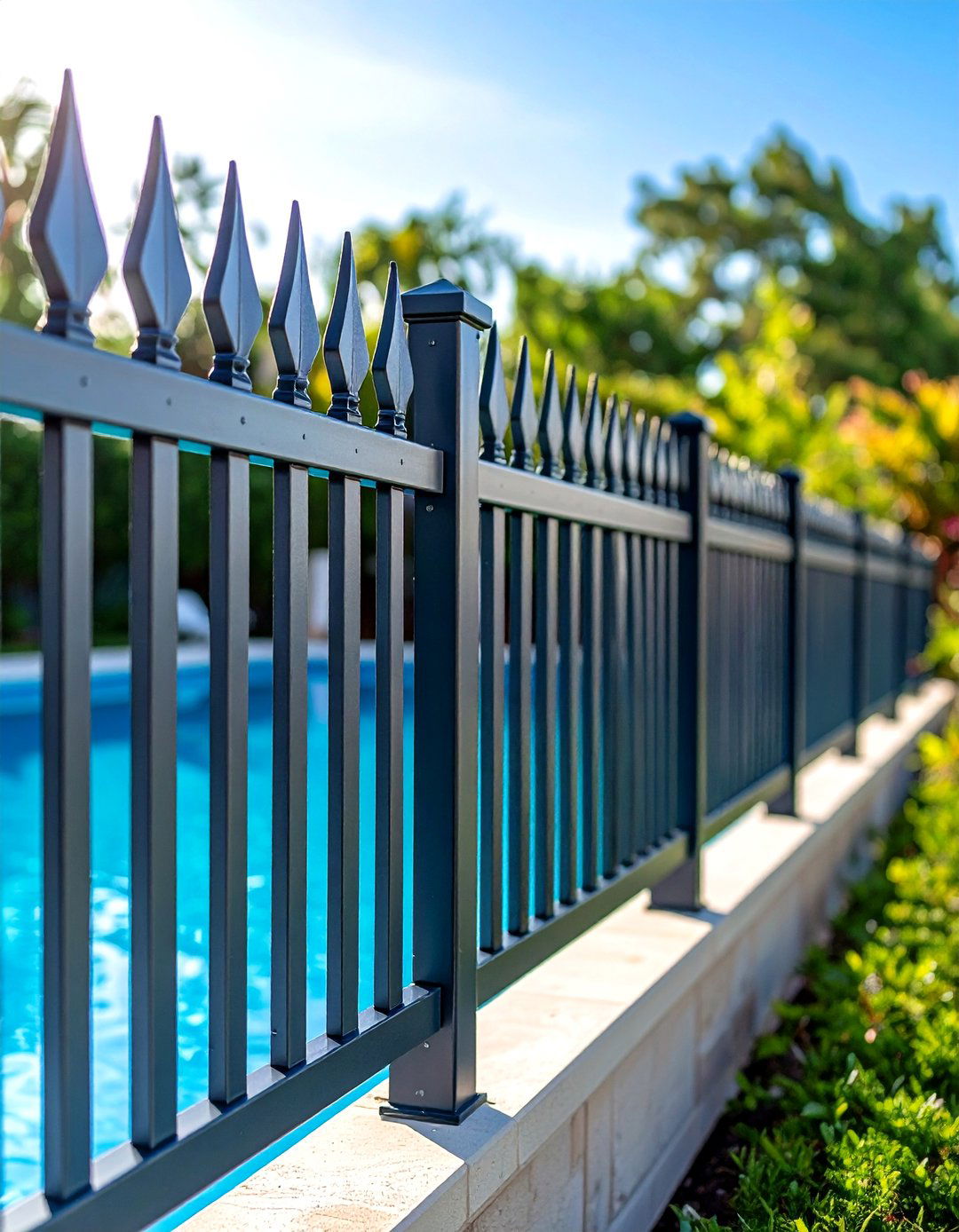
Aluminum fences are lightweight yet strong, typically available in decorative styles mimicking wrought iron with minimal maintenance needs. Coated with powder finishes, they resist rust and corrosion, making them ideal for coastal and humid environments. Costs range from $20 to $40 per linear foot. Aluminum fencing provides an open, elegant look, often used around pools due to safety compliance and clear sightlines. Installation is straightforward compared to iron, and panels require no painting. While less secure than steel, aluminum fences offer a refined appearance and decades of service with just occasional cleaning to remove debris and prevent oxidation.
7. Bamboo Fences

Bamboo fences leverage rapidly renewable bamboo poles or panels for an eco-friendly, tropical aesthetic. Installation costs vary widely, from $15 to $35 per linear foot, influenced by pole diameter and panel style. Bamboo screening provides moderate privacy and wind buffering, with a natural, textured look that ages gracefully to a silvery patina. While bamboo is naturally resistant to pests and moisture, it benefits from sealant treatment to extend its lifespan beyond 10–12 years. DIY-friendly panel rolls simplify installation. Gardeners favor bamboo for its sustainable sourcing and ability to blend into naturalistic or Asian-inspired landscapes.
8. Split Rail Fences
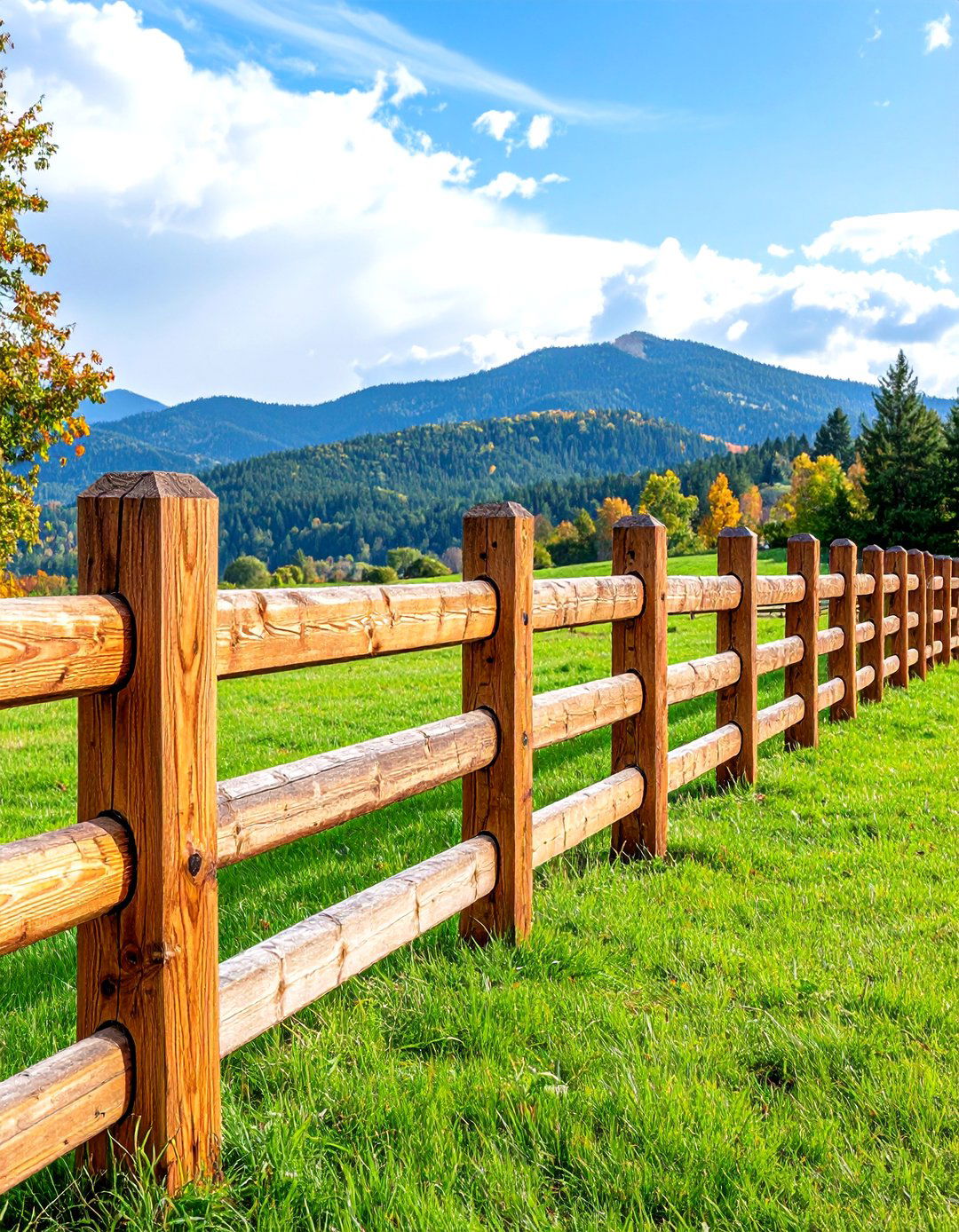
Split rail fences consist of horizontal rails, often made from cedar or pine, set into posts without pickets, offering a rustic, open appearance. Prices range from $3 to $9 per linear foot, making them one of the most affordable fencing styles. They serve primarily as boundary markers or for light containment, commonly seen on farms and rural properties. While they provide negligible privacy or security, split rail fences blend seamlessly into pastoral settings. Maintenance is minimal—setting posts properly to avoid rotting and replacing damaged rails when necessary. They exemplify country charm and ease of installation.
9. Post and Rail Fences

Post and rail fences, similar to split rail but with squared rails and posts, provide a slightly neater appearance while maintaining affordability. Prices average $5 to $12 per linear foot. Commonly constructed from treated pine or cedar, they delineate property lines and contain livestock or horses. Their open design offers visibility and air flow. Durability can be enhanced with rot-resistant wood or composite rails. Maintenance includes periodic inspection of posts for stability and replacing rails as needed. This style suits rural and suburban properties where a combination of functionality and modest aesthetics is desired.
10. Electric/Invisible Fences
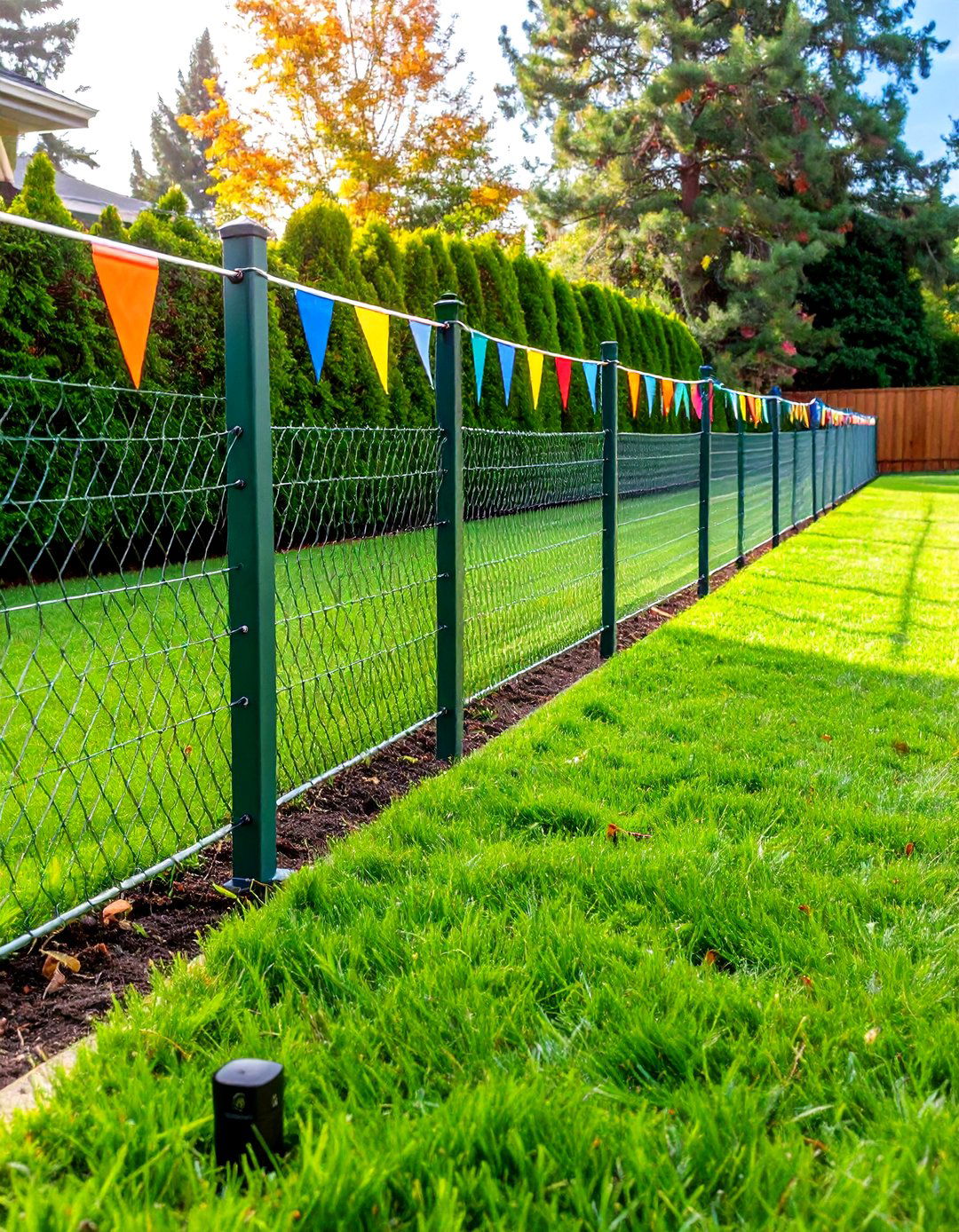
Electric or invisible fences utilize buried wires and a transmitter to contain pets or livestock with mild, corrective signals. Initial installation costs range from $300 to $1,000, plus collar device expenses. They preserve unobstructed views and allow unimpeded landscape flow since no physical barrier exists. Adjustable signal strength and boundary customization make them versatile, though training pets to respect the boundary is critical. These systems require ongoing electricity and battery maintenance. They suit homeowners prioritizing aesthetics and flexible boundary lines, provided they understand the commitment to proper training and upkeep.
11. Mesh and Chicken Wire Fences
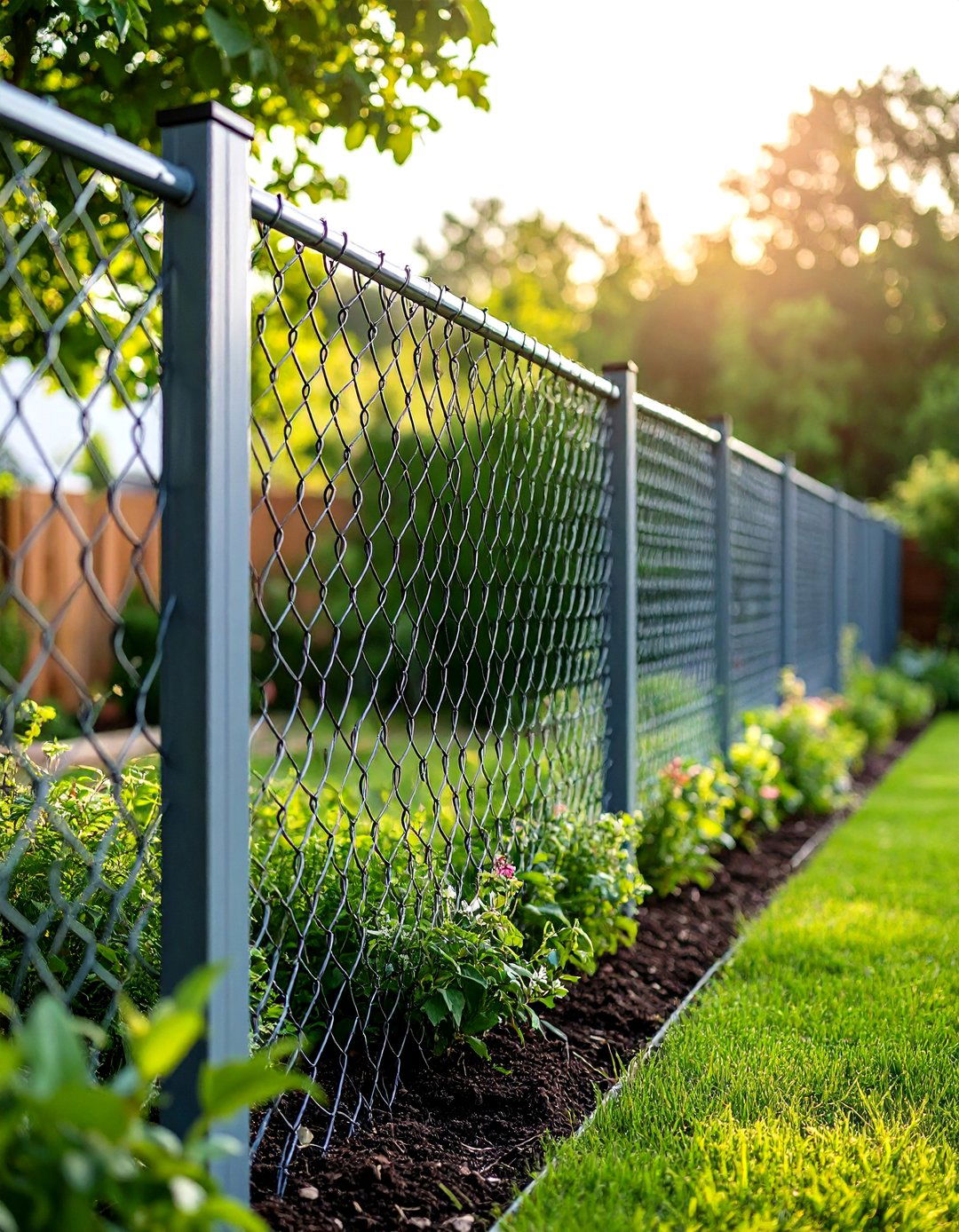
Mesh and chicken wire fences, made from galvanized steel or coated wire mesh, cost $2 to $8 per linear foot. They’re widely used for garden protection, poultry enclosures, and small-animal containment. The open weave allows visibility and ventilation, while fine meshes keep out pests. Lightweight and DIY-friendly, these fences require sturdy posts and tensioning to prevent sagging. They resist rust with proper galvanization but may need replacement every 8–12 years in harsh climates. Mesh fences strike a balance between affordability and function, ideal for hobby farmers, gardeners, and pet owners.
12. Barbed Wire Fences
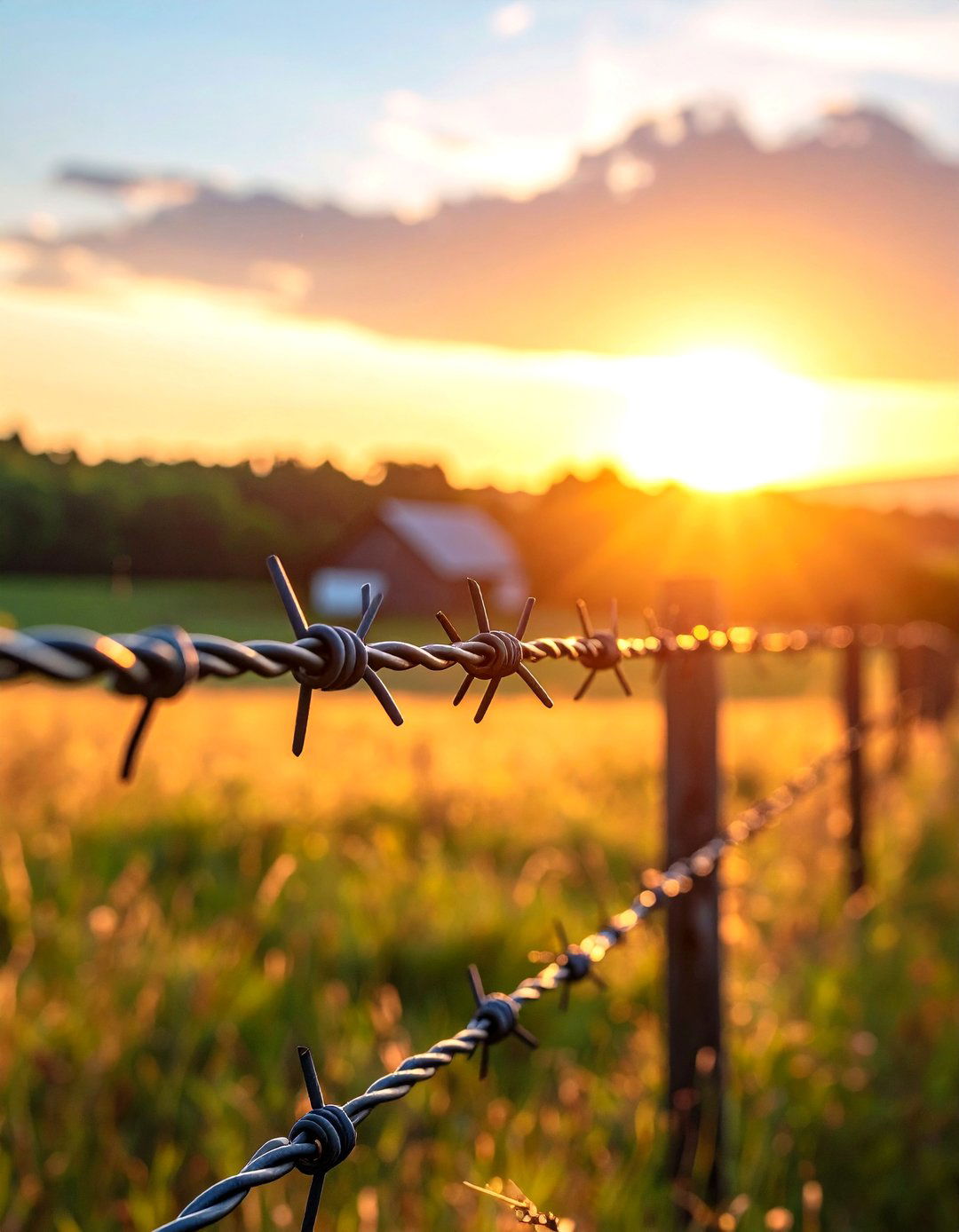
Barbed wire fences feature twisted strands with protruding barbs, costing $1 to $3 per linear foot. They excel in high-security and agricultural settings, deterring unauthorized entry and containing livestock like cattle. Installation demands sturdy posts and careful tensioning to maintain barb alignment. While not suitable for residential aesthetics, these fences are extremely cost-effective for large rural properties. Maintenance involves re-tensioning and replacing damaged strands. Barbed wire is less common in suburban areas due to safety concerns but remains a staple in extensive farmland fencing.
13. Privacy Fences
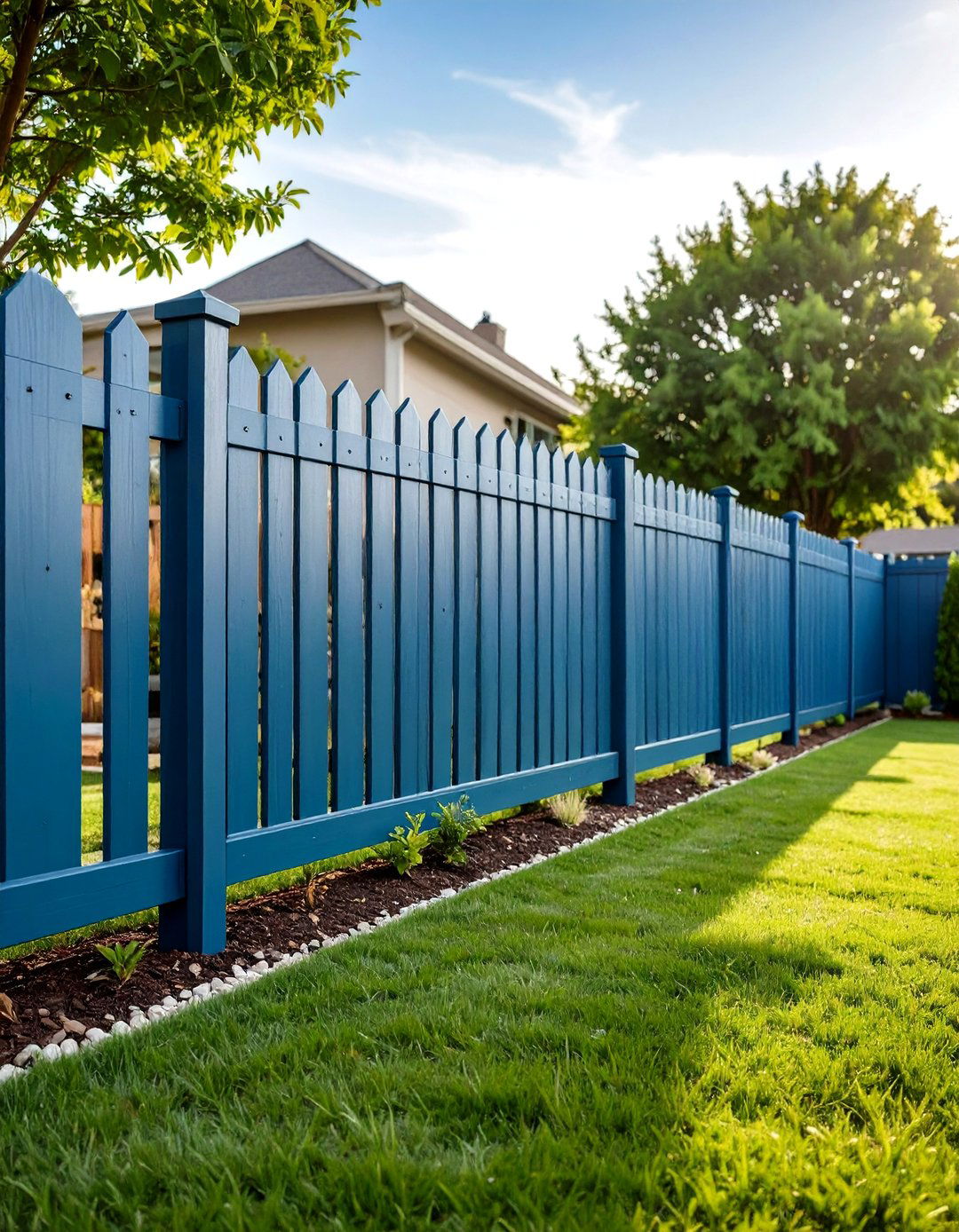
Privacy fences are solid panels—typically wood, vinyl, or composite—installed close together to block sightlines and noise. Costs range from $15 to $50 per linear foot, depending on material and height. Often 6–8 feet tall, they enhance security and seclusion. Vinyl and composite options require little upkeep, while wood panels need regular sealing. Features like lattice tops add air flow and decorative appeal. Privacy fences boost property value and curb appeal but may require local permits for height compliance. Their solid construction offers an effective sanctuary for backyards and patios.
14. Corrugated Metal Fences

Corrugated metal fences use galvanized steel sheets mounted on posts, offering an industrial, modern aesthetic. Prices start around $15 per linear foot. They provide excellent durability, privacy, and noise reduction, with minimal maintenance beyond occasional rust inspection. Colorful powder-coated finishes add design flexibility. Corrugated panels resist impact and harsh weather, making them suitable for contemporary residential, commercial, and agricultural applications. While installation may require specialized hardware and tools, the result is a sleek, long-lasting barrier that stands out architecturally.
15. Stone Fences
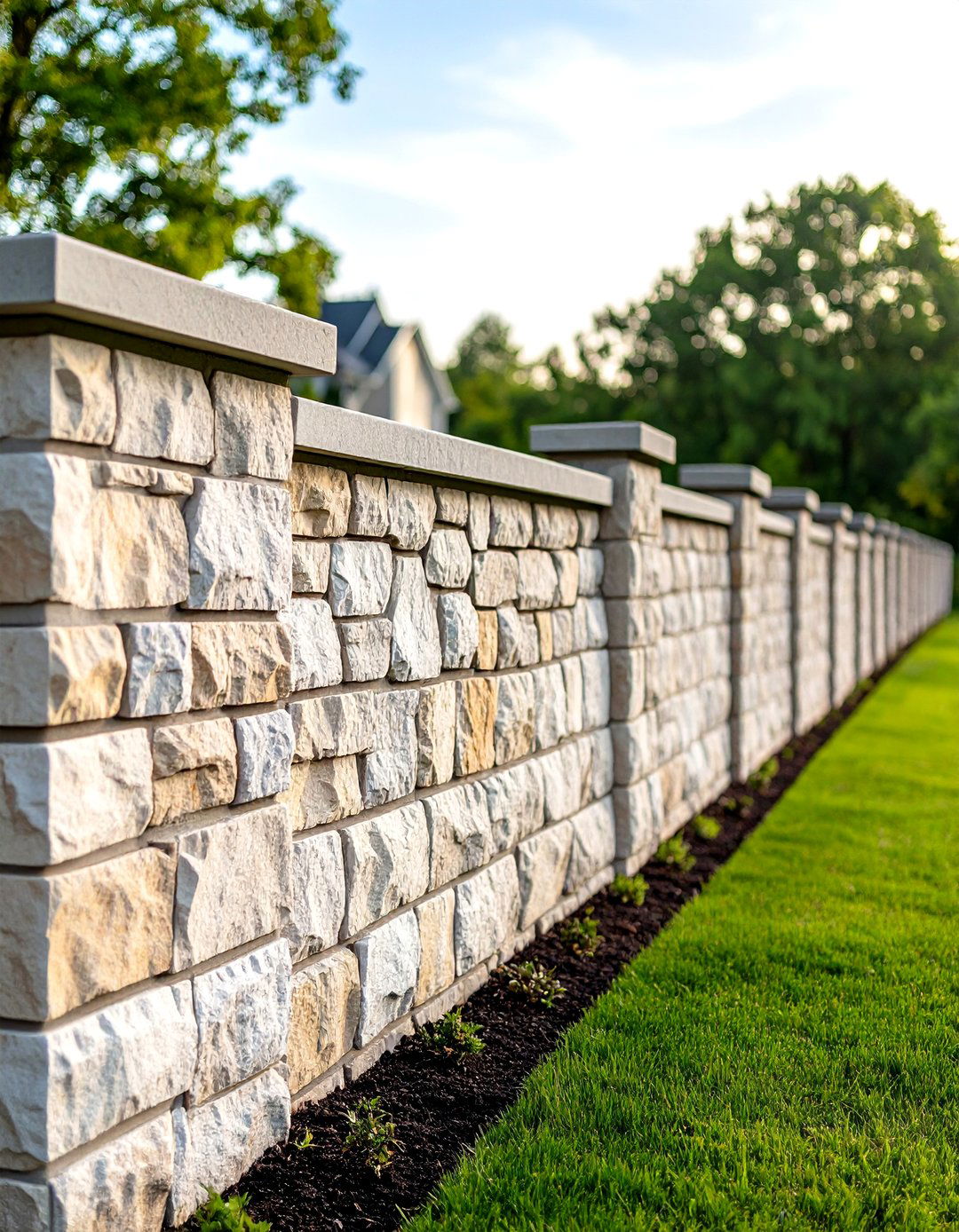
Stone fences—constructed from natural fieldstone, cut stone blocks, or gabions—range from $50 to $200 per linear foot, reflecting labor and material costs. They offer unparalleled durability, low maintenance, and a timeless, rustic appearance. Stone walls provide privacy, security, and sound buffering. Mortared walls can reach significant heights, while dry-stacked designs enhance drainage. Their weight demands solid foundation work. Although initial costs are high, stone fences can last centuries with minimal upkeep, making them a heritage-worthy investment for estates, vineyards, and historical properties.
16. Glass Fences
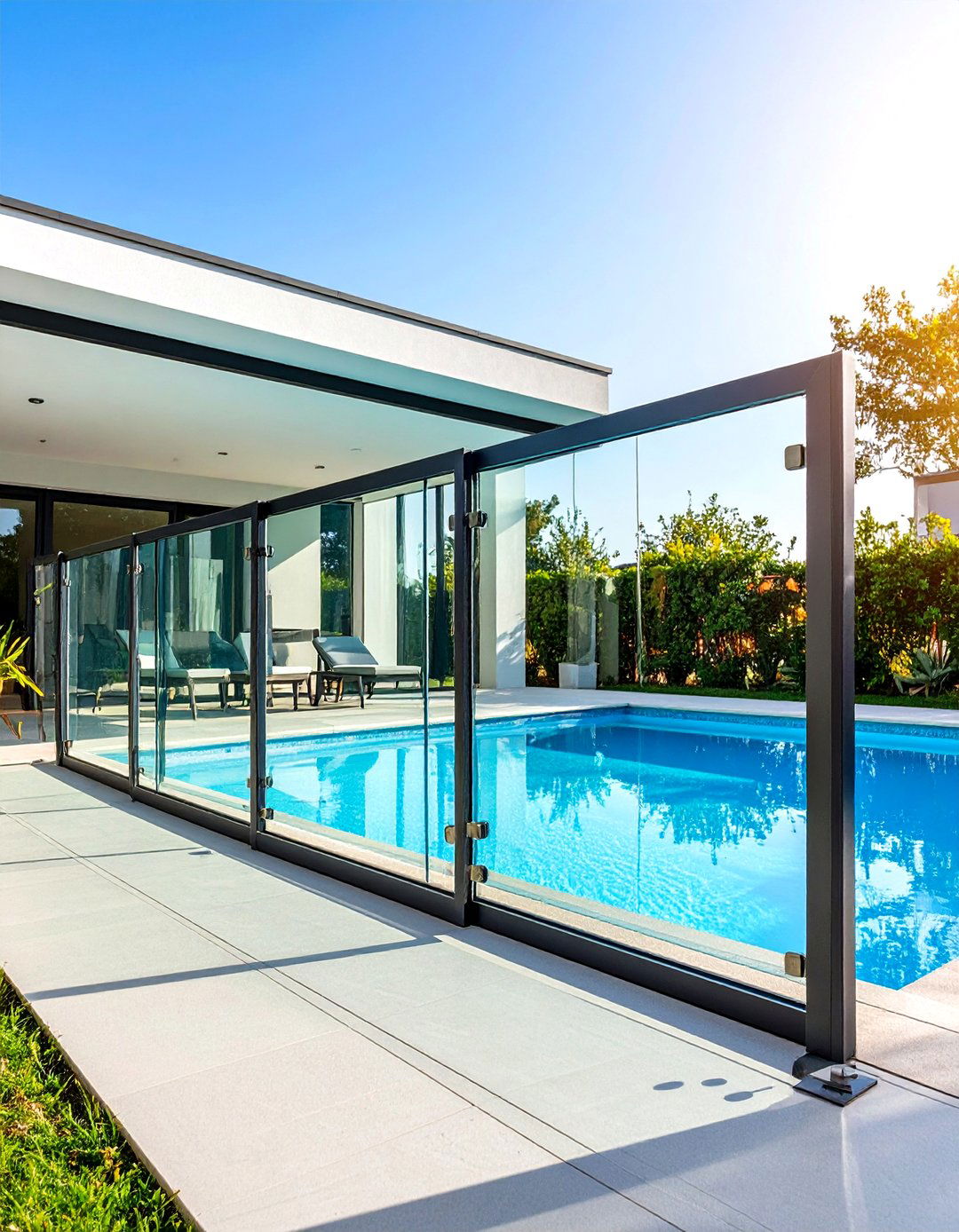
Glass fences, commonly used around pools and decks, consist of tempered safety glass panels secured by metal clamps or frameless hardware. Costs range from $200 to $300 per linear foot, reflecting material and specialized installation. They provide unobstructed views and a sleek, minimalist look. Glass panels require routine cleaning to maintain clarity and periodic hardware inspections to ensure structural integrity. While not providing significant privacy, they excel in safety compliance and aesthetic appeal for modern outdoor living spaces, blending safety with open design.
17. Living Hedge Fences
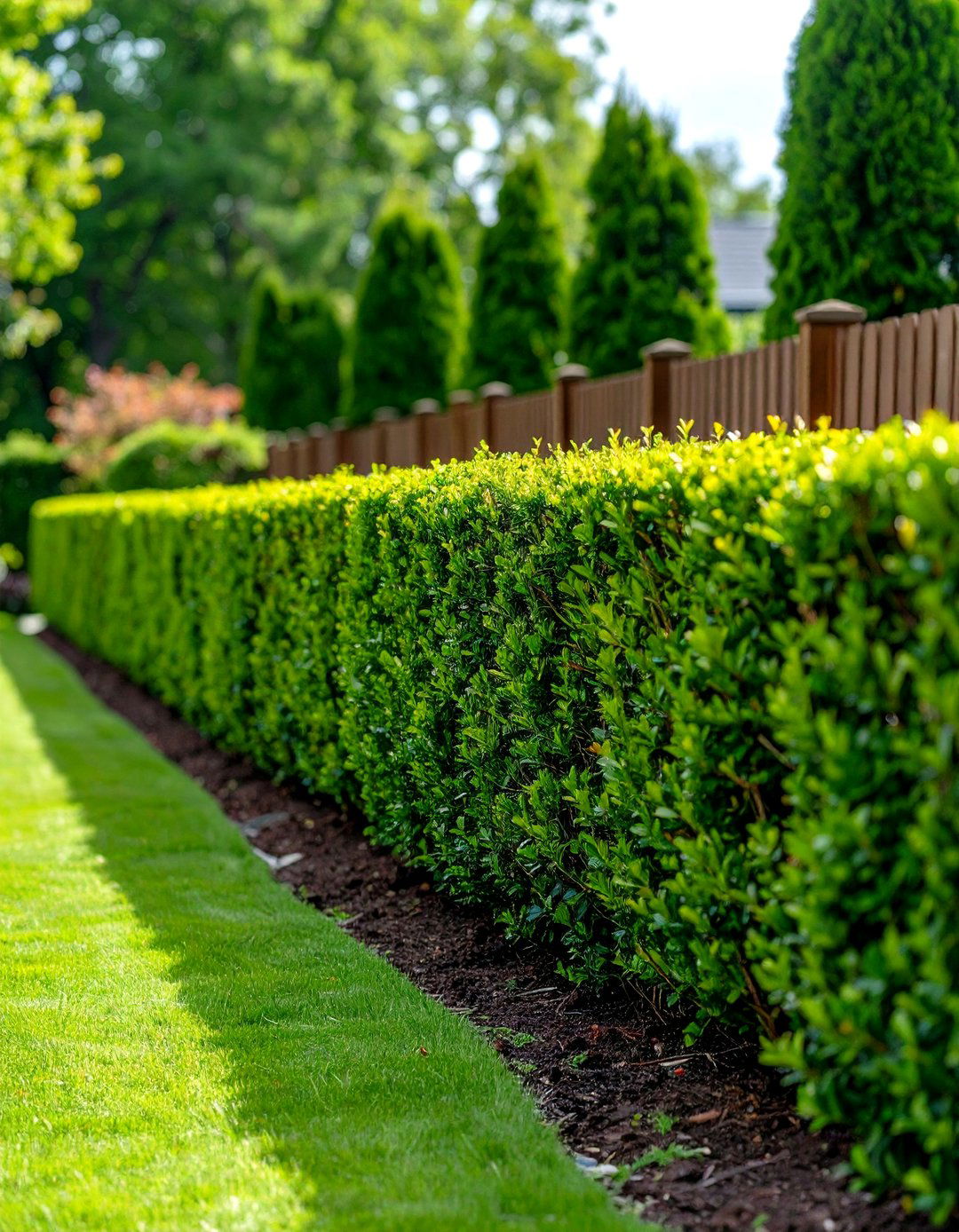
Living hedge fences use dense, fast-growing shrubs like boxwood, privet, or laurel planted in rows to form natural barriers. Installation costs vary by plant species and size but average $20 to $50 per linear foot including planting and early maintenance. Hedges offer privacy, wildlife habitat, and noise reduction. They require regular pruning, watering, and occasional fertilization. Mature hedges can last decades, adapting to landscape contours. Their organic presence enhances biodiversity and curb appeal, appealing to eco-conscious homeowners seeking sustainable fencing alternatives.
18. PVC Fences
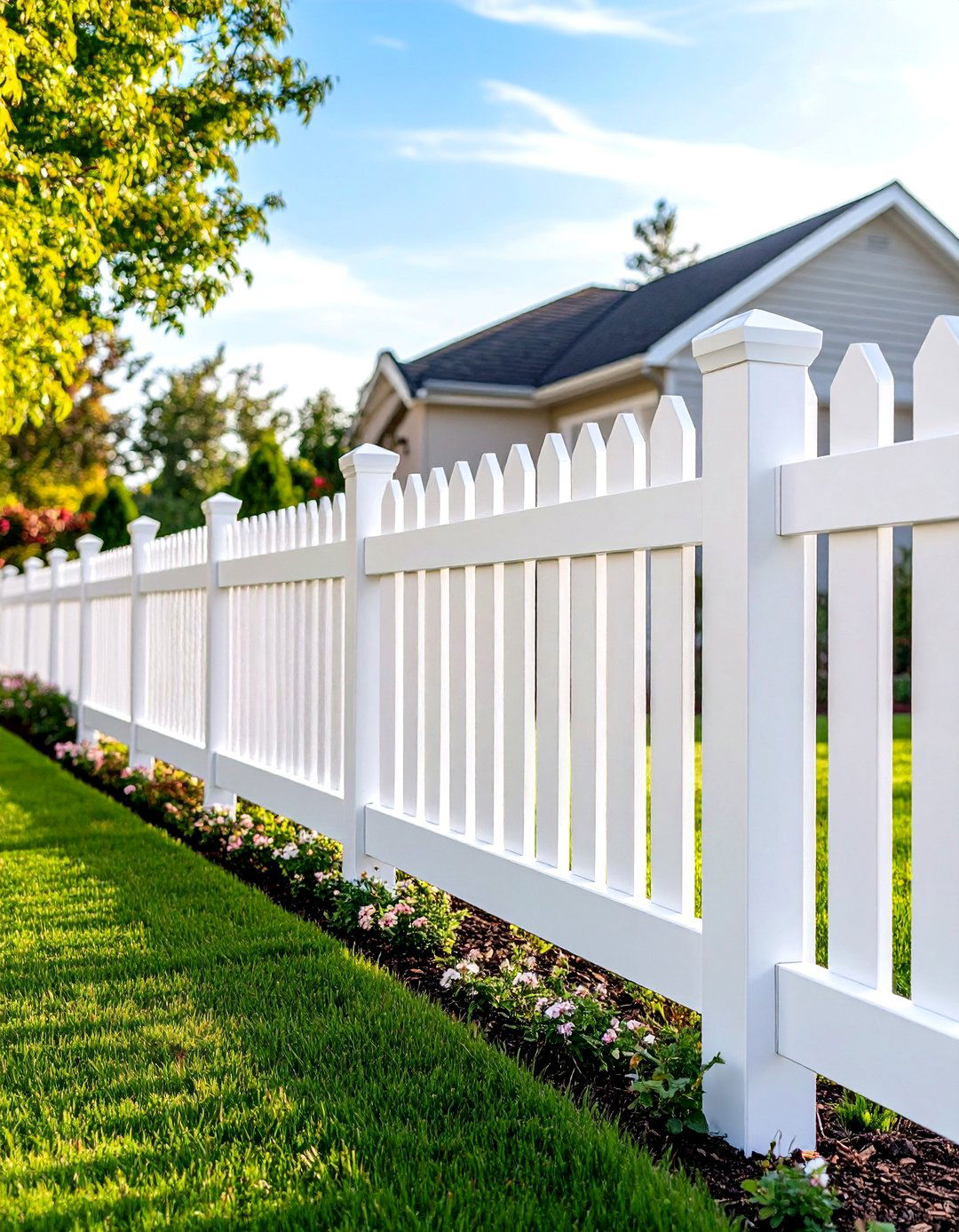
PVC fences, comprised of polyvinyl chloride, combine durability with low maintenance. Similar to vinyl, PVC panels resist rot, insects, and UV damage, costing $20 to $40 per linear foot. They come in various styles—privacy, picket, and semi-privacy. PVC fences never need painting; a simple wash maintains their appearance. Their chemical composition ensures longevity of over 30 years. While lacking the warmth of natural wood, PVC fences offer uniformity and ease of installation, making them popular for residential and commercial boundaries where maintenance simplicity is key.
19. Horse and Farm Fences
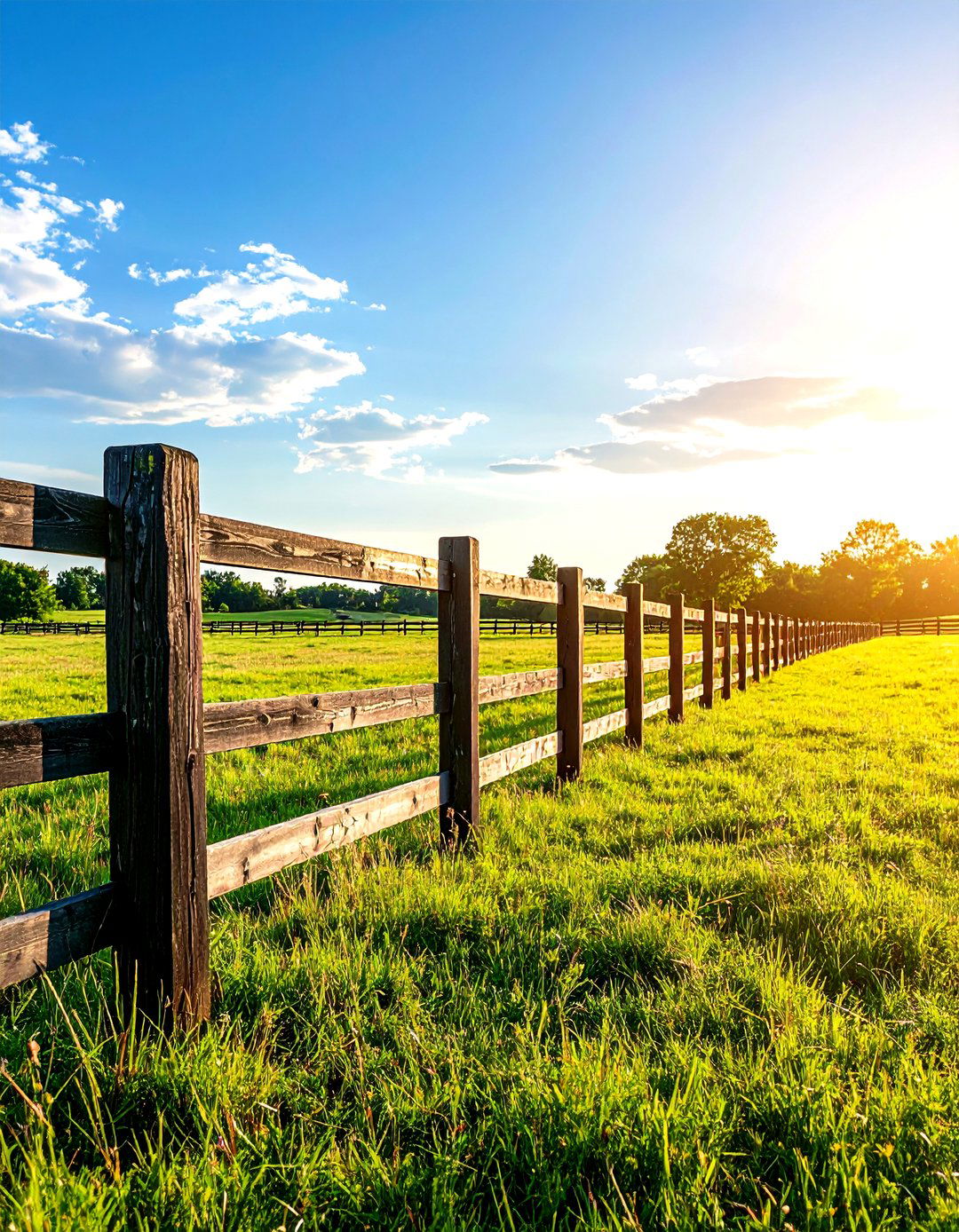
Horse and farm fences include post and board, pipe rail, and high-tensile wire designs that ensure containment and visibility. Costs vary: wooden post-and-board fences cost $8–$18 per linear foot, while pipe rail metal fences range $20–$35. High-tensile wire fences run $1–$3 per foot. These fences prioritize safety, visibility, and durability, preventing injury to animals. Maintenance involves tightening wires, replacing broken boards, and treating wood posts. Farmers choose styles based on livestock type, climate, and budget, balancing functionality with aesthetic integration into rural landscapes.
20. Ornamental Fences

Ornamental fences encompass decorative metal, vinyl, or composite styles featuring intricate scrollwork, finials, and patterned panels. Prices range from $30 to $60 per linear foot. They blend artistic design with functional boundary marking, adding curb appeal to upscale residences, parks, and commercial properties. Materials like aluminum or steel offer longevity with periodic maintenance, while vinyl and composite options minimize upkeep. Ornamental fences often conform to specific architectural motifs, making them a popular choice for heritage restorations and custom residential builds seeking both elegance and security.
Conclusion:
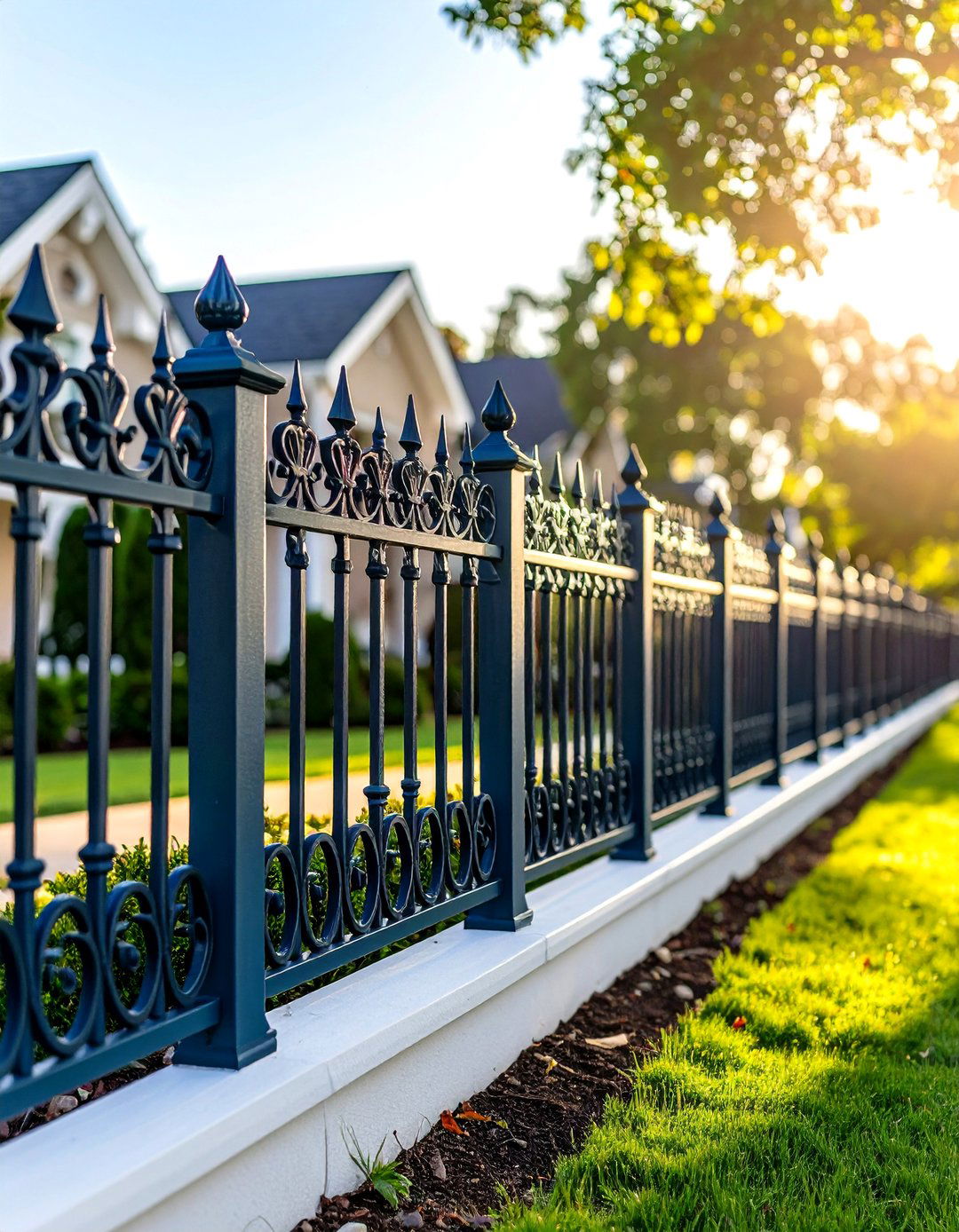
Across these twenty fence types, homeowners and property managers have a wealth of options balancing cost, maintenance, aesthetics, and functionality. From the classic warmth of wood to the low-maintenance durability of vinyl and composites; from security-focused barbed wire to the living beauty of hedge fences; each style addresses unique needs and environments. By considering factors like climate, desired privacy level, budget, and landscape design, one can select the ideal fence to enhance property value, safety, and curb appeal, ensuring a lasting boundary solution that aligns with personal taste and practical requirements.


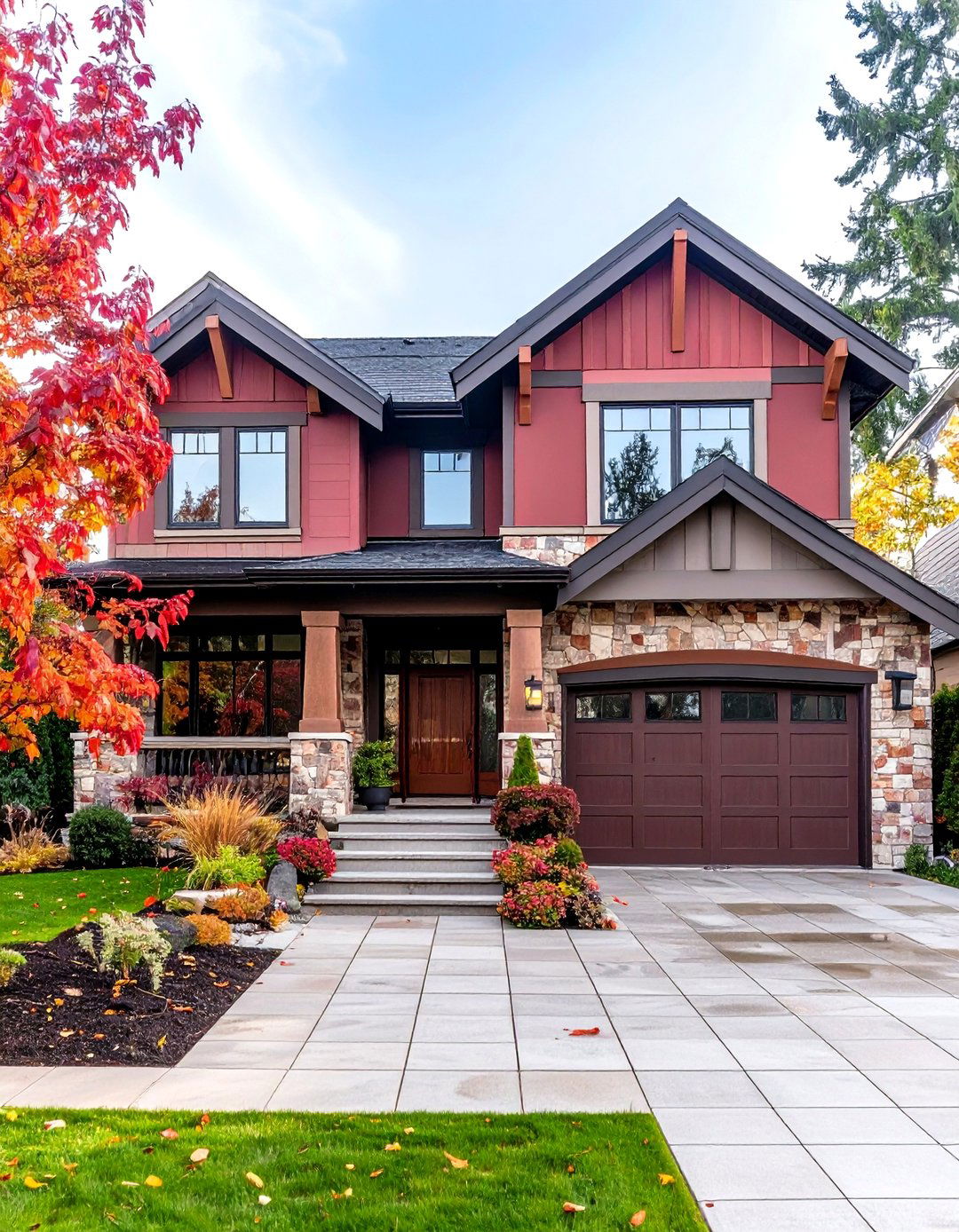

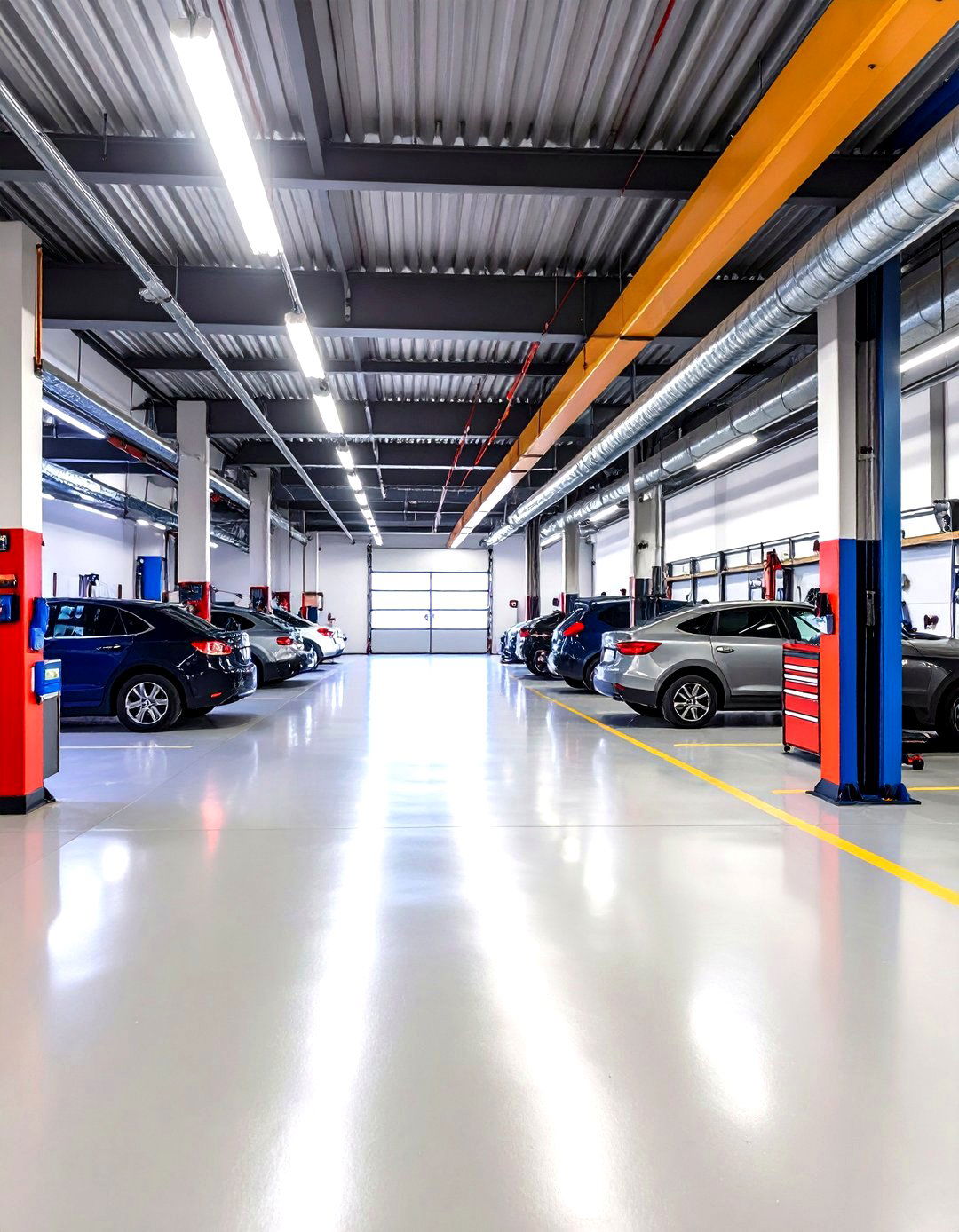
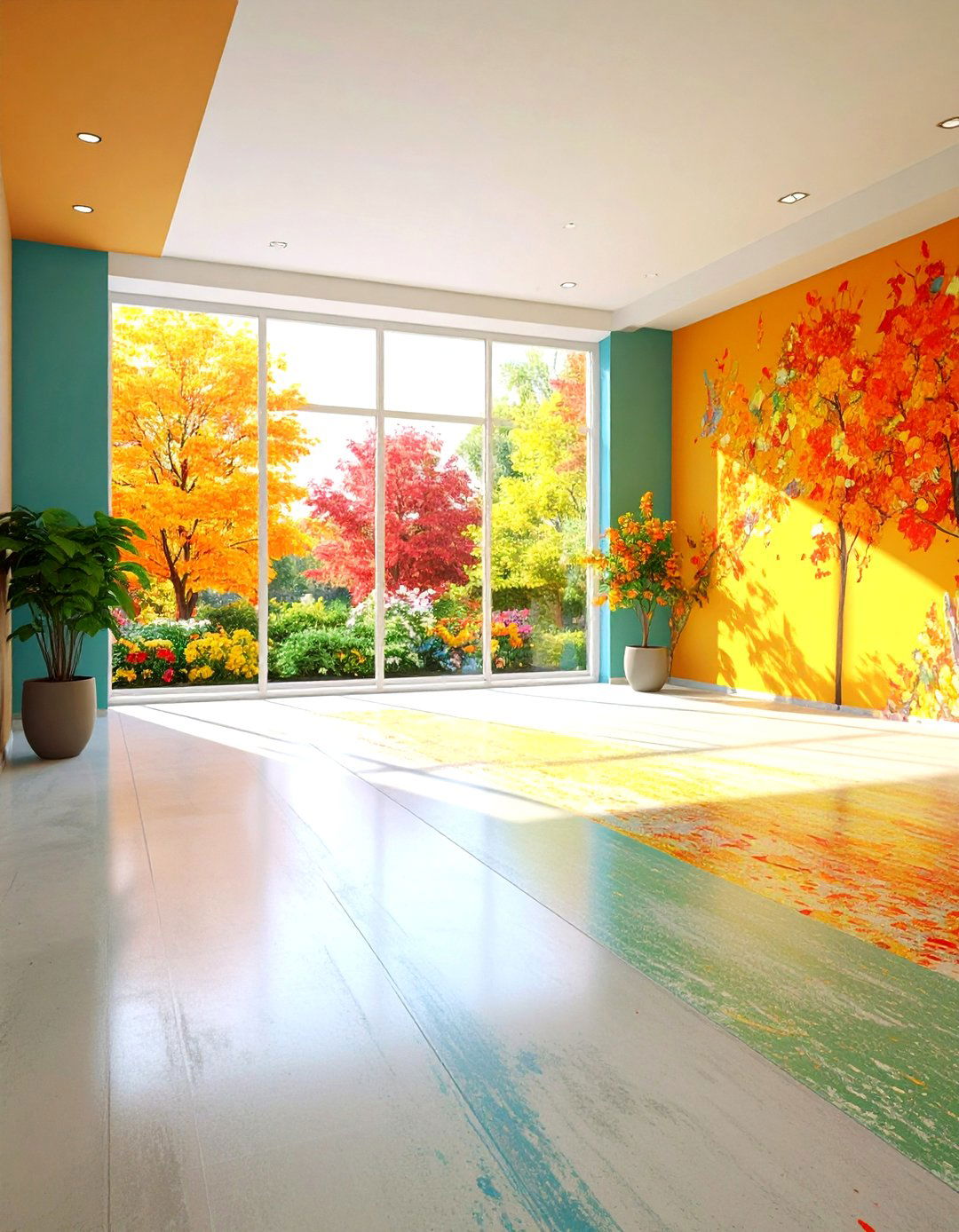
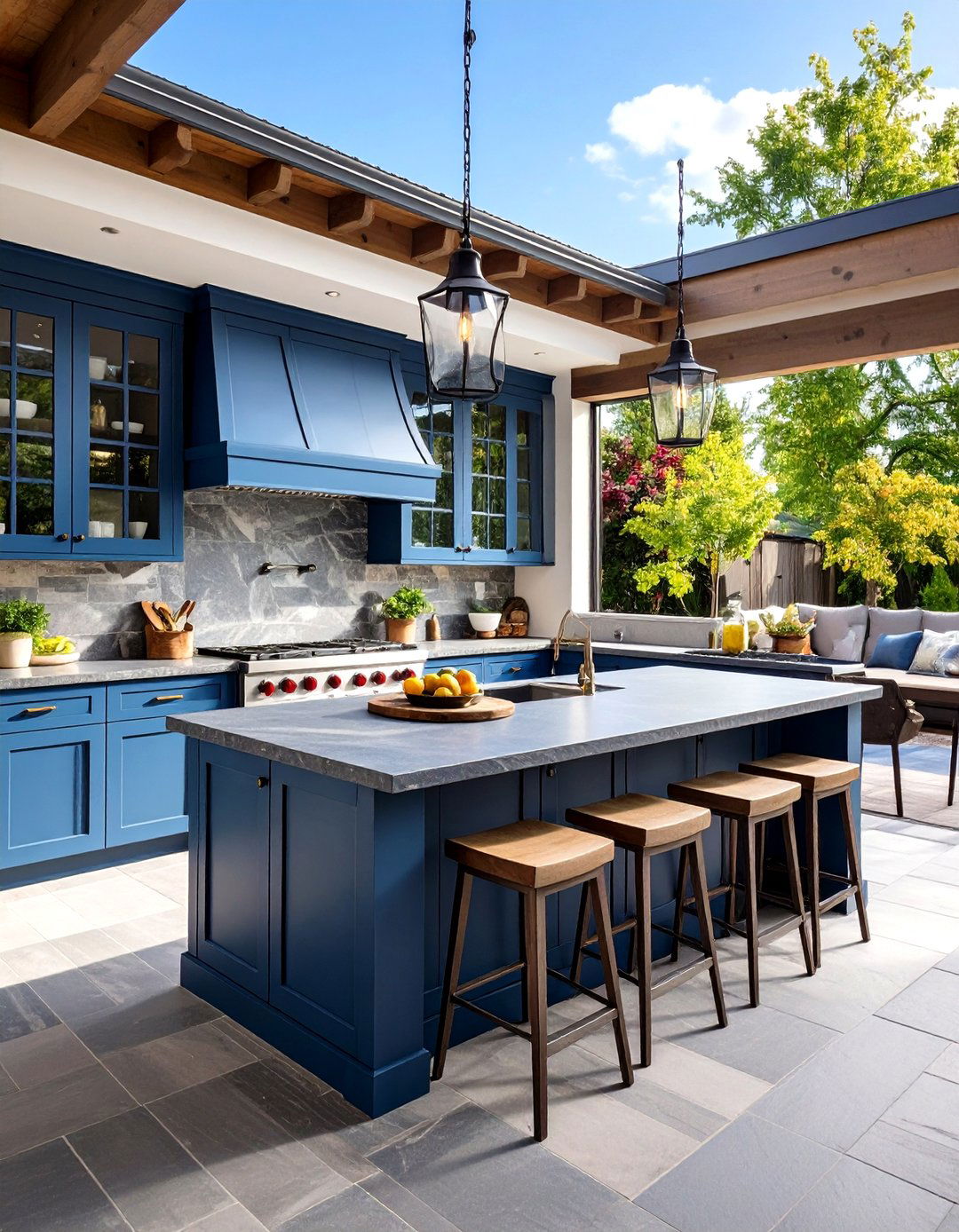

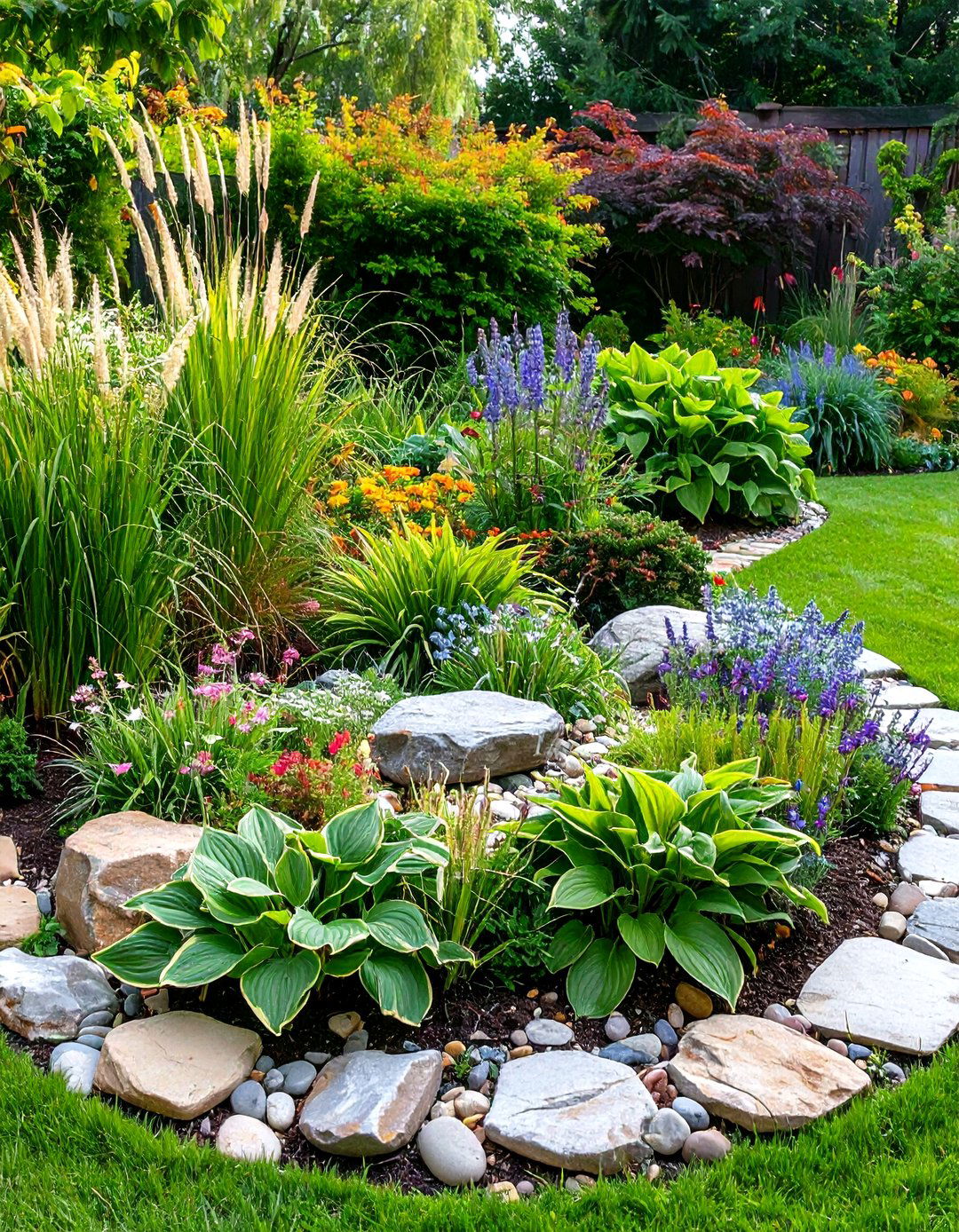
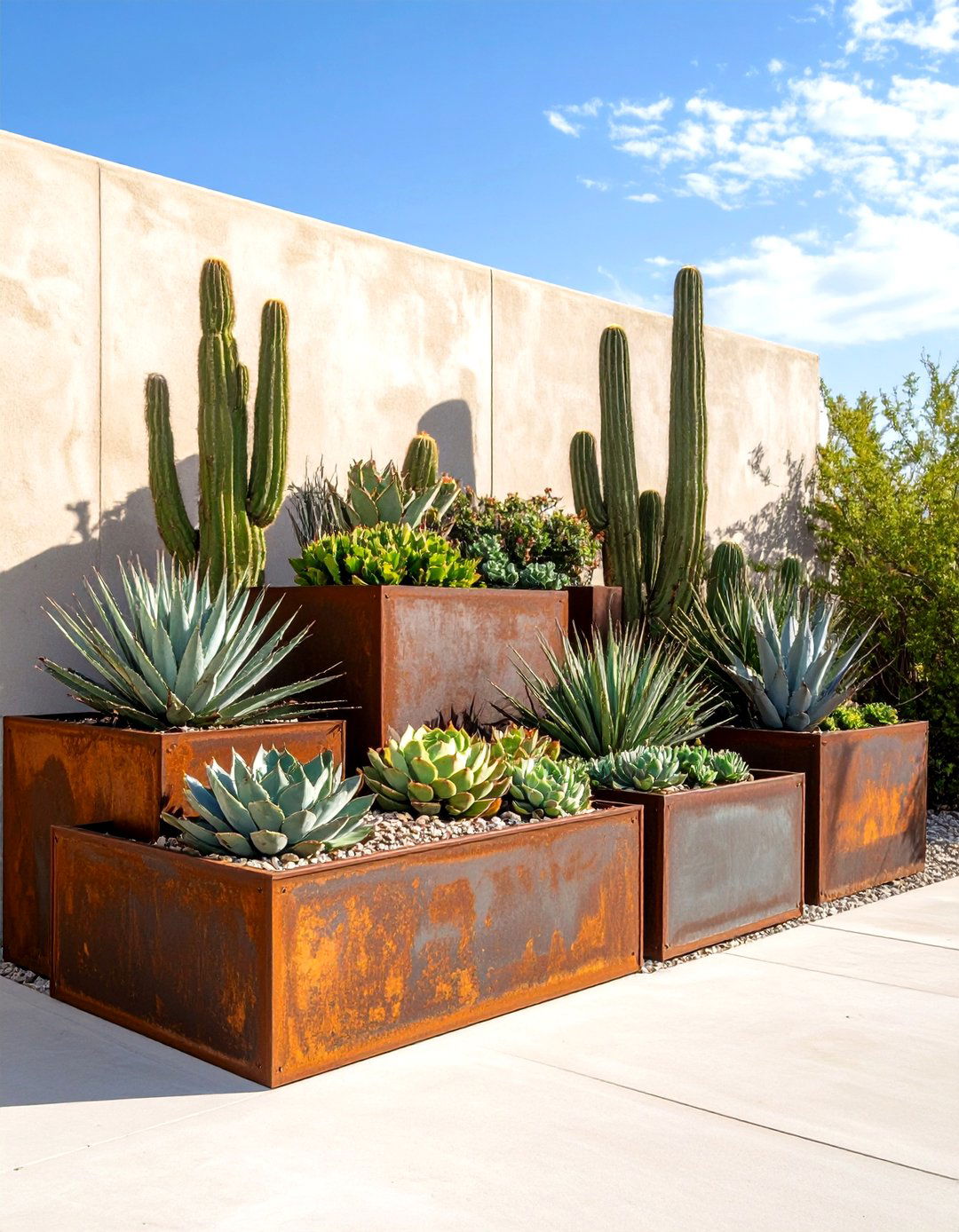
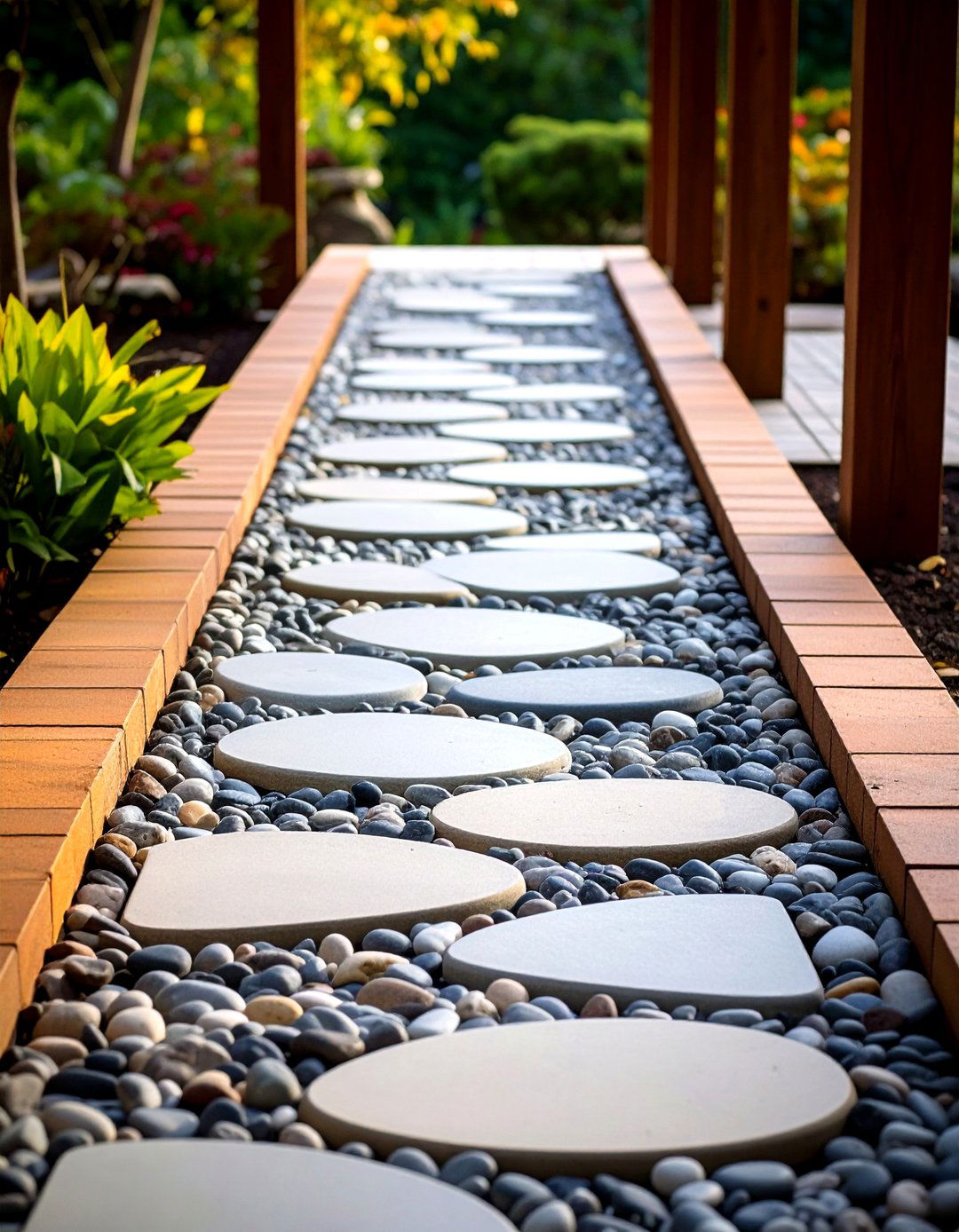
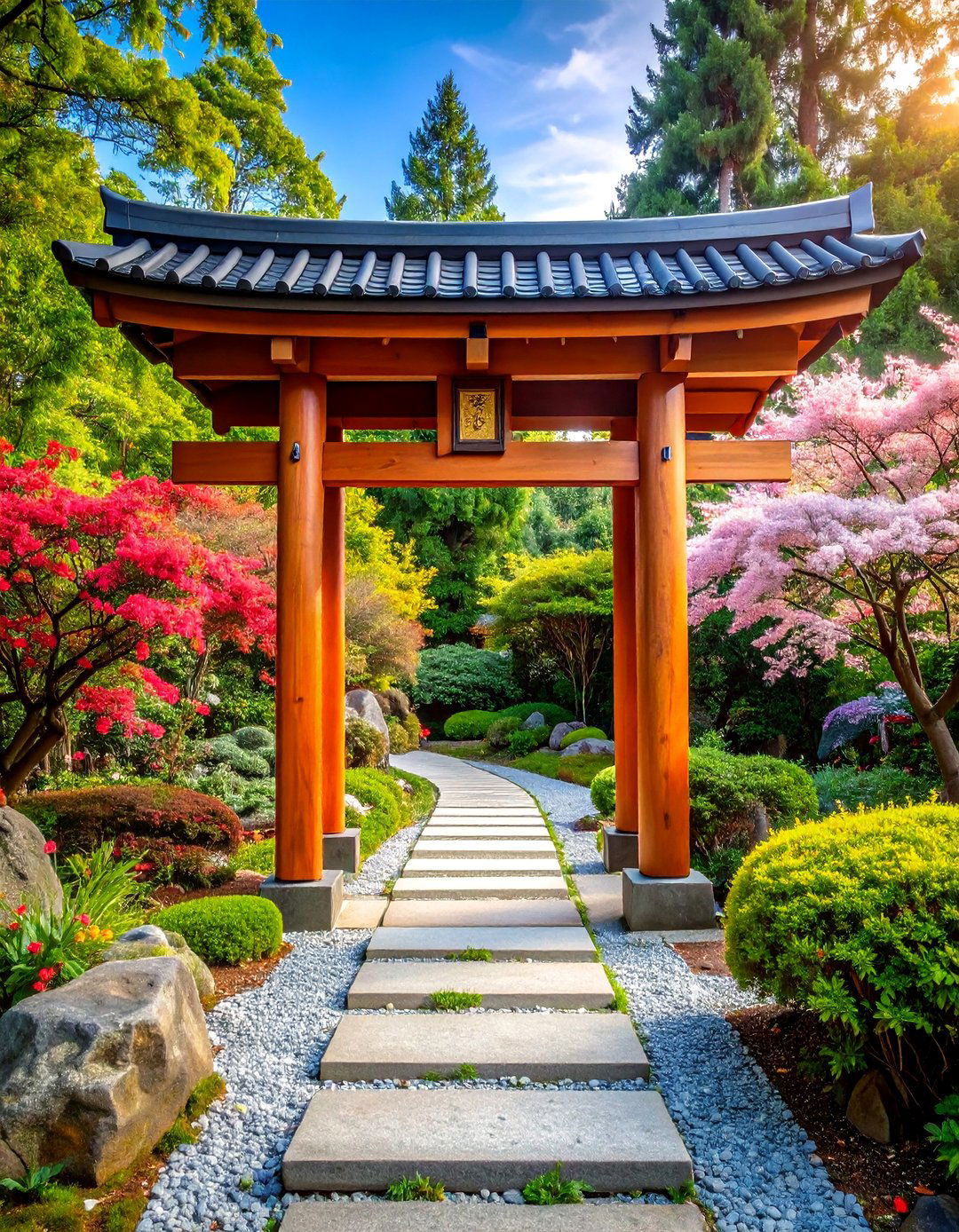
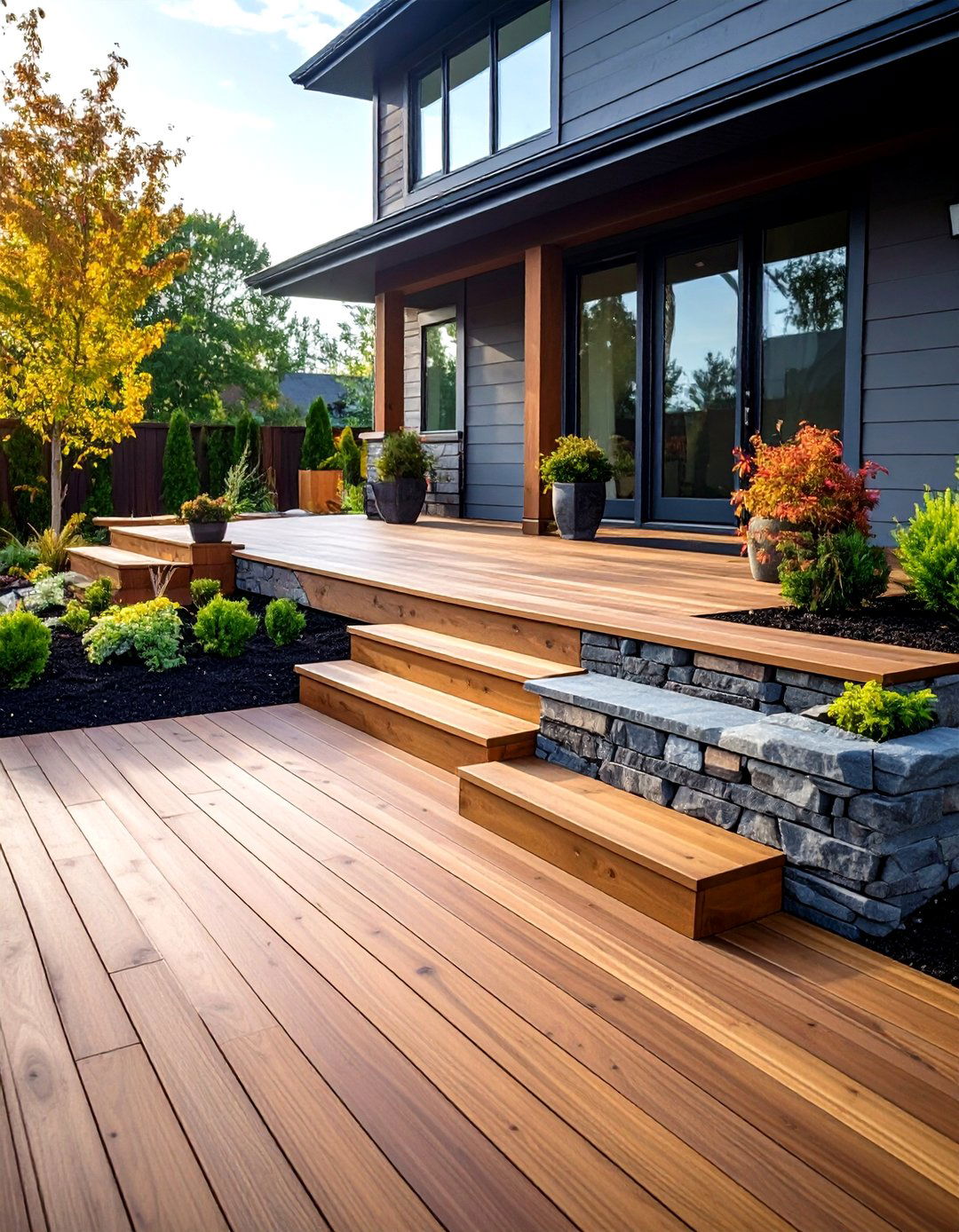



Leave a Reply